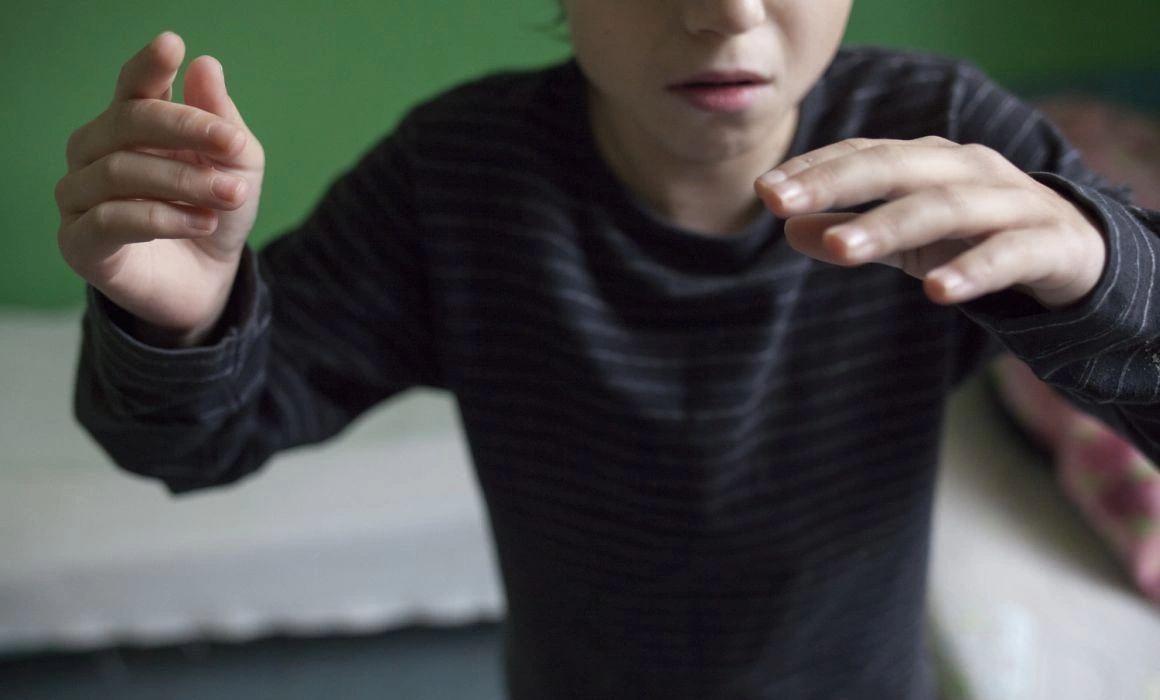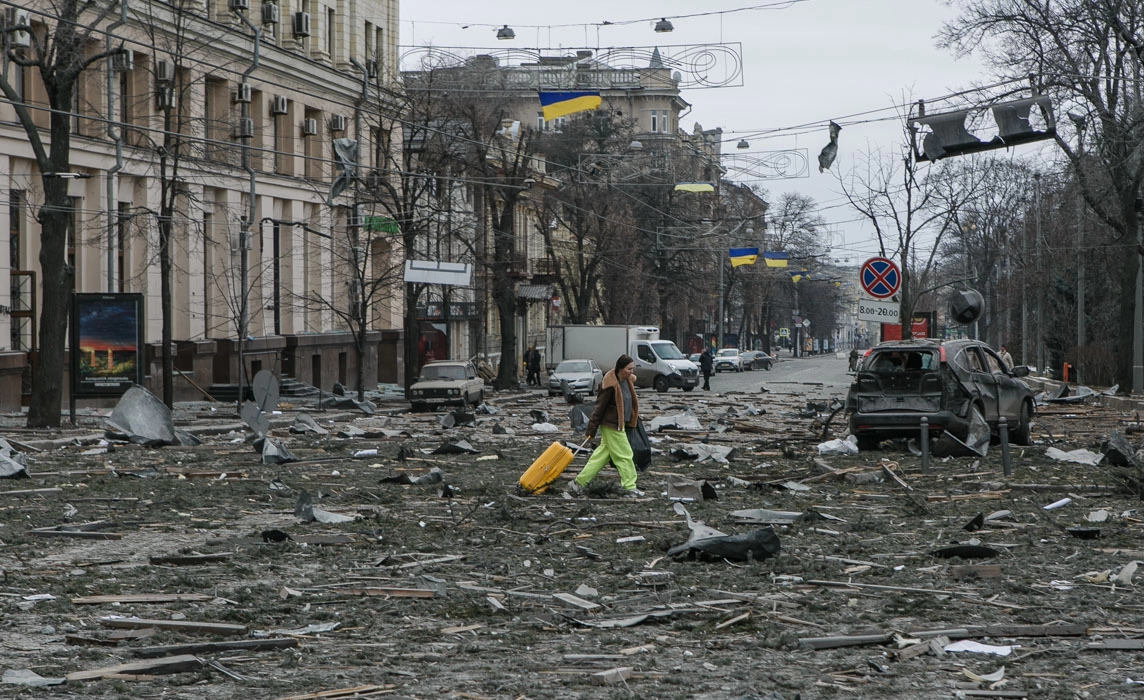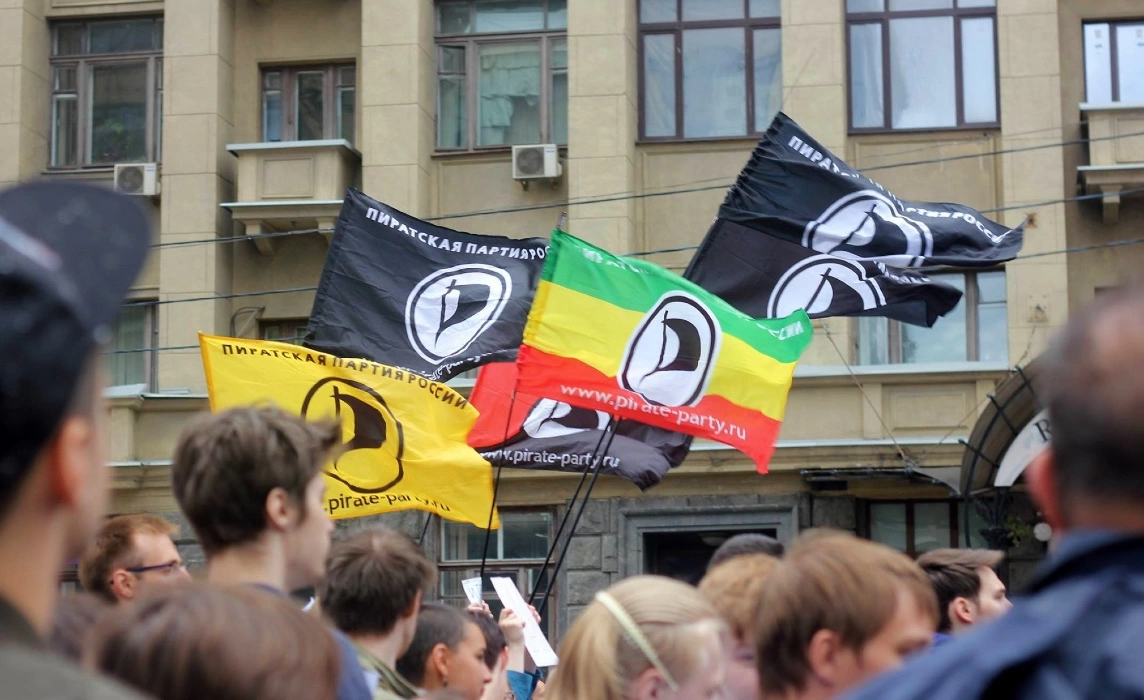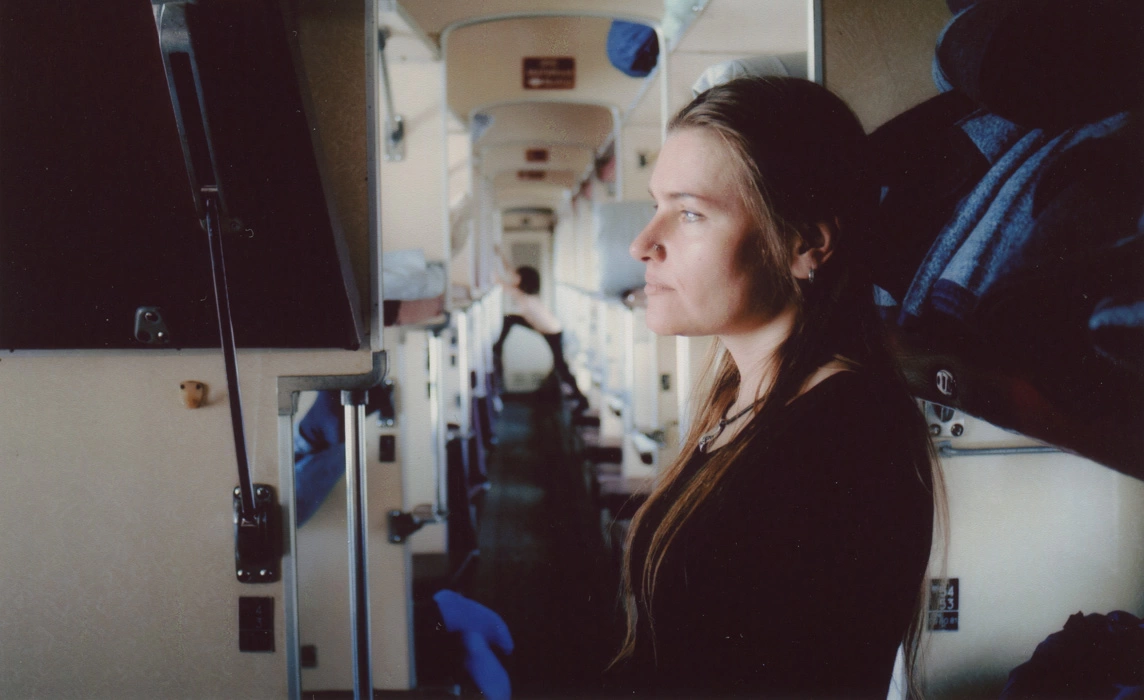I asked 8 photographers how they relate to exoticism, vulnerability, and ethics. Who answered? Andreea Câmpeanu, Andrei Nacu, Andrei Pungovschi, Cosmin Bumbuț, Hajdu Tamás, Odeta Catană, Petruț Călinescu, and Virginia Lupu.
It is as easy to delight, as it is to scare, when you’re holding a camera; it is an instrument that plucks personal experiences from time and space. Sometimes, this helps one connect to a distant reality, to the voices one cannot hear outside one’s window, to an alien place, and to other people’s present. Other times, it fuels the stereotypes that we already have within us, with thoughts about what’s behind the borders that we haven’t already crossed. Most times, though, we need stories to learn about things; we need patience to understand, and empathy, to stay human.
I talked to eight photographers about what it means to do documentary photography. We asked them each, three questions about when and how they click the shutter button, what their boundaries are, both personal and external, and what they’ve learnt from their work.
For the month of August’s theme, we tried to find out what exoticism and exoticizing mean. Until now, we’ve written about „Oameni între oameni” („People Among People”), „Cum să nu fii turist” („How Not to Be a Tourist”), and „6 feluri de exotic literar” („6 Types of Literary Exoticism”).
Where does the border between chronicling and exoticizing lie, for you? How do you set the boundaries that dictate when it is alright to approach a subject?
Andreea Câmpeanu
Photojournalist in Europe and Africa; she’s worked for Reuters and AFP; she does nice things here.
You exoticize when you don’t know or you don’t care to know your subject, or the group of people you’re photographing. It is then that they become “the other” and your audience can sense that in the photograph.
If you photograph your friends, will they look exotic? I’m not going to explain what exotic means (other than the fact that it comes from Greek and means from the outside), there are plenty of books on this subject. But I will say that exoticizing was very popular during the colonial period when the West was interested in the East and it is a form of imperialism. Check out Victor Segalen’s Essai sur l'exotisme, or Said’s Orientalism, Christopher Pinney’s Photography's Other Histories, Eric Milet’s Orientalist Photographs, or Bons baisers des colonies: Images de la femme dans la carte postale colonial. There are so many of them!
We, Romanians have managed to recreate this the best way we could. We always look for the exotic among us or if it’s not there, we invent it. We’re always putting some distance between “us” and “them”, and “we” are always the ones who hold the power. The camera gives you great power, but it must be used respectfully and responsibly.
For 5 years, I photographed a few African countries (Sudan, South Sudan, Madagascar, Kenya, and Central African Republic). Naturally, at first I was fascinated by them and I was looking for things that were different from what I knew. But I was lucky enough to get a reality check, early in my travels. I had a few friends who were very smart and considerate and who guided me without them realizing it too much. When I don’t know something, I like to stay quiet and learn. I rememeber a dear friend from Malaga told me how much she hated being called exotic in France, where she actually grew up. There are very few people who like to be constantly reminded that they are different. We’re actually more similar than we are different, no matter where we are on this Earth. I think it’s important, as a photographer, to always be aware of this and to make sure that your audience understand this, too.
There is the risk of bringing stereotypes that are ingrained in you to a job. Check out the criticism around McCurry’s photograph from NYT (same photo that was at some point, criticized for being Photoshopped), or one around Jimmy Nelson’s Before They Pass Away. Also, there is the discussion on Angela Fisher and Carol Beckwith’s photography of dinka (a tribe from South Sudan) that was initially about how photographers earn money from the photos and the subjects don’t, but it eventually came to exoticizing or objectification.
I think we don’t talk enough about these issues that are actually quite widespread when taking photographs. I have lots of friends who used to tell me: “White photographers come to take photos of black children with flies around their mouths”. I think we all know those pictures that got so many awards and were so popular back in the 80’s. It was around that time that the song “Do They Know It’s Christmas” came on. I recently read on Facebook about how Band Aid performed it again in 2014. I was in a Christmas-decorated mall in Nairobi around the holidays. A week later I was in a refugee camp and was interviewing a woman who was in charge of distributing food in South Sudan. She spoke neither English, nor Arabic (lingua franca in South Sudan) but she told us that all she wanted for Christmas and New Year’s Eve was peace. I thought of the song when she said that. Of course they know it’s Christmas.
In Africa, there are plenty of reactions to exotic representation, objectification and dehumanization. I think we as photographers, should lend an ear and be open to that. There is africasacountry.com, a website with plenty of critical analysis of African representations in the media. And also the famous essay How to Write about Africa, written by Kenyan Binyavanga Wainaina.
Exoticizing people dehumanizes them. I think we must portray the people and the situations we’re photographing as multi-layered as possible. The plants and animals are exotic. People aren’t exotic, like I read on a certain blog, after you wrote to me about this month’s subject on Scena 9.
There’s also the aestheticization issue. Check out the criticism to Sebastino Salgado’s photography that Susan Sontag also talks about.
We as a people, also get to be exotic. Just take a look at the photographs of Romania. Take Rena Effendi’s Maramureș, which was awarded the World Press Photo Award in 2014. Compare that to Petruț Călinescu’s series Mândrie și Beton (Pride and Concrete), which I believe to be much more realistic. My father is from Maramureș, not the traditional one, but I do have an interest for the area.
I try to avoid dramatization. I always think of my audience, who is generally far away and is used to seeing everything that is not white, as exotic, different, wild, even if that person or place is right there in their own backyard.
I’ve taken photographs of people in conflic areas, where you don’t have time to bond. Sometimes, I only see people once, I take their photograph and walk away. So, I look for universal moments of interaction between people and then I just hope that the audience, no matter who they are, don’t view the subject as “the other”, even though they look different or live in different environments than they do. I hope the audience can identify with and relate to the subjects.
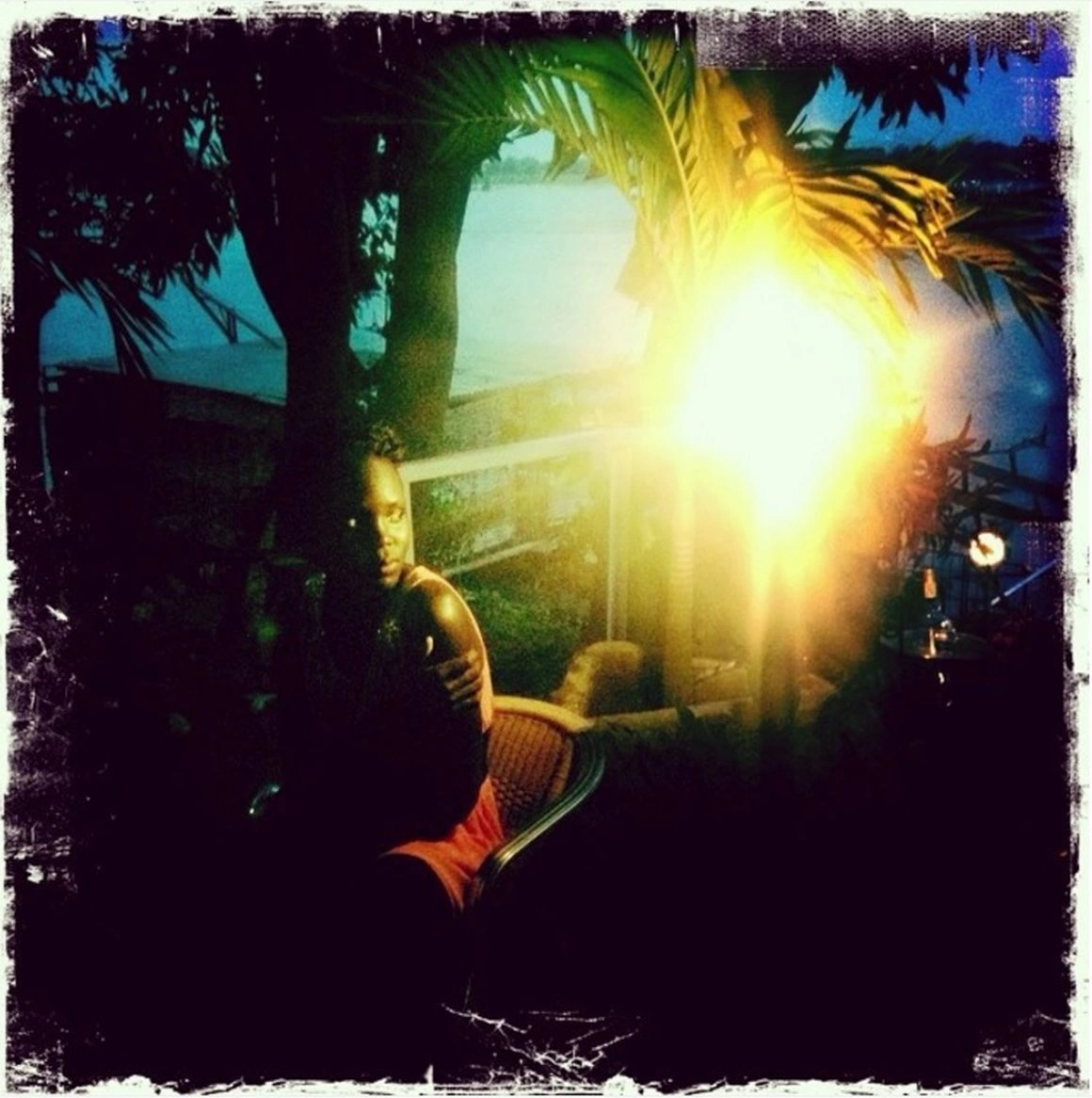
Andrei Nacu
Specialized in documentary photography in Wales; satisfy your curiosity here.
For documentary photography, I believe we need to focus our attention on things, people or subjects that are on our minds, that we care about or that we want to learn more about. It’s only then that we can truly get involved in the photographic process and begin to understand the subject and be able to talk about it without superficiality. As long as we’re honest with ourselves and with others, I think the only limitation would be to not hurt the people we’re photographing in that moment or later, through the way we use the images.
Andrei Pungovschi
Photojournalist for France-Presse, Decât o Revistă, The Guardian, Esquire; among other things, he documented the flee of the refugees; you’re sure to see him during protests, and also here.
For photojournalists, there’s a dilemma here, because it’s our role to come up with new and interesting subjects. They don’t need to be exotic, but they need to show you something you haven’t seen before. The difference between documenting something and exoticizing it, lies in the purpose and the way you plan to show your work. I once did a piece on the Tichilești hospital in Tulcea, where there are the last people in Romania with leprosy. Actually it’s not really a hospital, more of a community, with houses, gardens, churches, all built around a hospital.
Before I even snapped a single photo, I talked to the hospital’s director, Doctor Răzvan Vasiliu. He was easing me into the unfortunate experiences he’s had with some photographers, who published the people’s wound details in the newspapers. I told him that those types of photographs should stay in the medicine books and that I was interested in the community and their lifestyle.
Cosmin Bumbuț
He’s done it all, from fashion photography, to advertising, to documentary photography; he’s published Transit, a must-have photo album, he’s madly in love with Cuba, and you can stalk him here.
When I started out, I was interested in the aesthetics: I wanted to capture beautiful images. Along the years, I became a documentary photographer and my priorities shifted. Now I set my own limits between form and function at the moment I raise my camera, and I instinctively choose whatever is important. Whether I am right or wrong to take a photo, I decide that when I do the editing, when I am relaxed. It is then that I decide to keep a photo or scrap it. It’s natural to be swept away by the exoticism of a situation, a character, the light or the way a place looks like. But if I just can’t help but take a photo, I take a deep breath and ask myself “What is actually the story behind this” and then I try to focus on it.
I can thoroughly understand a subject only when I am accepted. Sometimes, this can take a long time, but it’s worth it. Most often, I don’t take any photos when I meet a subject or a story for the first time. I keep my camera on my shoulder, where it is still visible. I do this even if there’s something worthy of photographing, if I see a portrait, a scene or a beautiful light, I refrain from clicking the shutter. Sometimes, I regret missing something, but I know that my wait will be rewarded with access to everything. And that is more important that the final image.
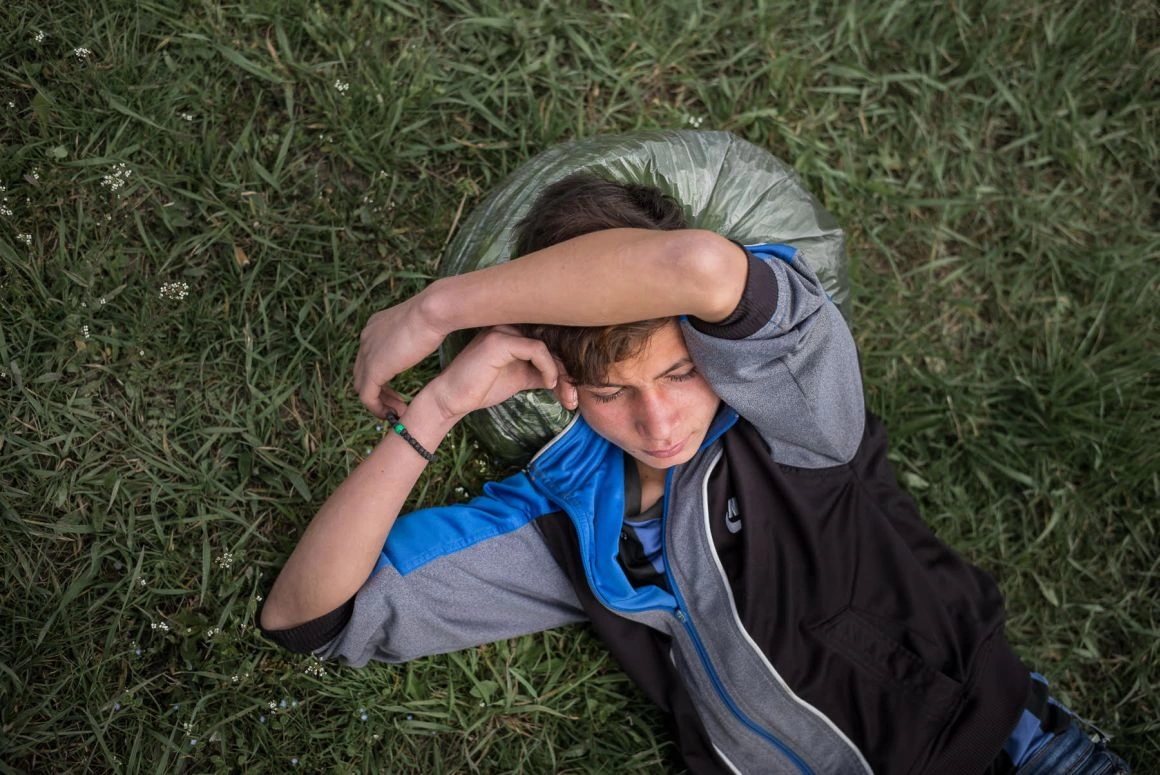
Hajdu Tamás
Originally from Baia Mare, Hajdu Tamás documents the life of his little town; he’s been published in The Guardian and The Independent; you can check out his eye for details, right here.
I choose my own subjects, and I don’t really seek exoticism. I take photographs of familiar things that I see every day. But it is possible that those very things, so mundane to me, can seem exotic and unusual to a certain public.
When I have the camera in my hands, I need to make decisions almost instantaneously. This is how I establish the way I approach the subject. You don’t have time to pass judgment, you need to act on the spur of the moment.
Odeta Catană
Specialized in documentary photography; at the moment, she is living in Berlin; if you’ve been to ONG Fest and Street Delivery, you’re surely to have seen the impressive caravan for Lagărele de lângă tine (The Death Camps Next to You); more of what Odeta accomplished here.
I am a documentary photographer and I never interfere to create a certain image. If I notice that the subject isn’t comfortable with me taking their photo, I simply put the camera away and wait to them to be ready to give me access; I don’t like tormenting them with my camera. My subjects are more important than a photo. Sometimes I observe and participate and I try to get close to my subjects, to gain their trust. This way they stop being shy and just do away with any barriers or blockages. It depends a lot, on whether I need to take a photo or get close to my subjects. To be honest, I don’t think I’m doing anything special, whether I’m taking a photo of my grandmother (who is very shy), or of a complete stranger, I’m just being myself and I’m sharing things from my life to get the same thing back from my subjects. I gain their trust and I learn about them through sharing – I give and I receive. If I’m told not to use a photo or to shop photographing, I do just that. I respect all people, especially my subjects. .
Petruț Călinescu
A member of Panos Pictures New York; for a while, he traveled around the Black Sea; you can see the rest of his work here.
I think the limits of getting close to someone are quite commonsensical, and don’t necessarily partake to a certain deontology. Sometimes, you can exoticize without meaning to do it, when you’re in a completely new environment.
Virginia Lupu
She chronicles the life of the trans and sex workers communities in Bucharest; she only does film photography and posts it here.
I don’t consider myself a documentary photographer, and my main purpose isn’t that of informing people. To me, other goals come first. I don’t stage my scene, I ask them to pose for me but they do it however they want to do it. I sometimes challenge them to look at the camera, but I don’t tell them to smile or be sad or anything like that. Everyone is free to choose their own pose, to be how they want or how they feel. And it’s the same for me. When I first got into photography, I had adrenaline rushing through my body and I couldn’t think of anything else other than clickclickclick. It was just a stage and I don’t regret it. Now I like to get close to the people, to slowly discover them and their whole story. I’m less enthusiastic about the whole process. I’m not saying that it’s completely gone, but I do postpose it. When you get close to people with an open heart and mind, your own fears and that of your subjects simply melt away.
But what does exoticism really mean to us? I talked to Marina Albu about exotic and exoticism and we thought of fruit. Let’s think of a fruit that isn’t widely available in our country, for example mangosteen or lychee (yummy), and let’s sell it in our country. We market it as being very delicious and people come and buy it to see for themselves how yummy it really is. Some will like it, some will not. Or we’ll give them some mulberries, which seem to be very much ignored here, and we market them to be superyummy. People will be intrigued by the fruit and will buy some. It’s the same with art. I think it’s all about the way you present yourself and how you act – this shows up in anyone’s work. Each person sets their own set of rules and limitations and the others will resonate with them or not. Some believe it’s bad to purposely exoticize something and I believe to be just cheating. When you influence something to make it appear the way you want it to, to make things seem different from what really they are. Then again, being unique can be exoticizing.
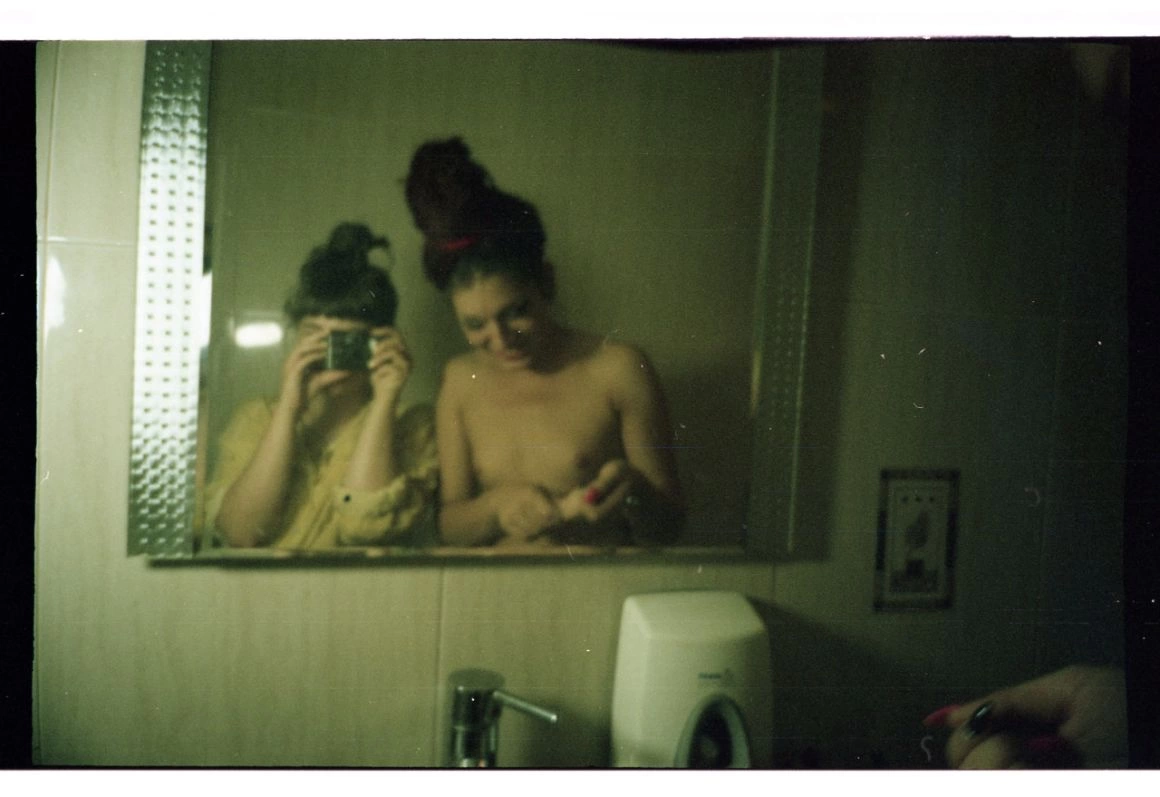
How do you get close to your subject, in the case of vulnerable people, situations or places?
Andreea Câmpeanu
I’ve always found it easy to get close to people, no matter their backgrounds, with or without the camera. As a photographer, I try to be as honest as possible about what will happen with the photographs. I try to think about the effect it will have on those I am photographing, especially when it comes to vulnerable people. I try to think if they can hurt them in any way, and about the contexts the photos can be used in, especially when you’re working with an agency and you don’t get to have control. You really need to give this some serious thought.
As I said, with the power our camera gives us, comes great responsibility. We can go to a president’s home and have dinner with an ambassador or we can go to refugee camps. I’ve been to both on the same day, more than once.
I always compare the need to inform with what could potentially happen as a result of the publication of the photos. And you’re always put in this situation. Even if you have a good photo and a good story, I think it’s vital to think about the negative effect taking that photo could have on your subject. I always think of that person to be a mother to a small child. And when that child grows up, how will they feel when they discover the photograph of their mother in a vulnerable situation. Will they feel happy? Will they feel shame?
That’s why I find it essential that local photographers are published, photographers who belong to the community. Their photographs won’t be as pretty, as dramatic, or as colorful as those of an experienced photographer, but they will be more real.
Andrei Nacu
I try to be aware of the responsibility I have towards those who trust me. Also, I try not to start out with any preconceived notions. Instead, I try to be curious and open about what I will discover through my photography, and only then form an opinion. Empathy and the courage of not hiding your own faults and weaknesses are vital to building an honest relationship with your subject.
Andrei Pungovschi
For me, it is essential to transform as quickly as possible from a two-meter man carrying a camera around his neck, to a man you can easily talk to. That doesn’t always work out. It depends on the context. Outdoors, there are always situations when I don’t have time, when there’s too much noise and things are moving with the speed of light. Most of the times, people will let me know if they’re in the mood to let me photograph them, just by their reactions to my approaching them. I always try to pay attention to these types of things. But again, that doesn’t always work out.
Privately, when I arrive at someone’s home, or in a community, the rhythm changes. I can usually have time to clearly explain what I want to do and why I’m there. It’s vital for me that they understand and accept me.
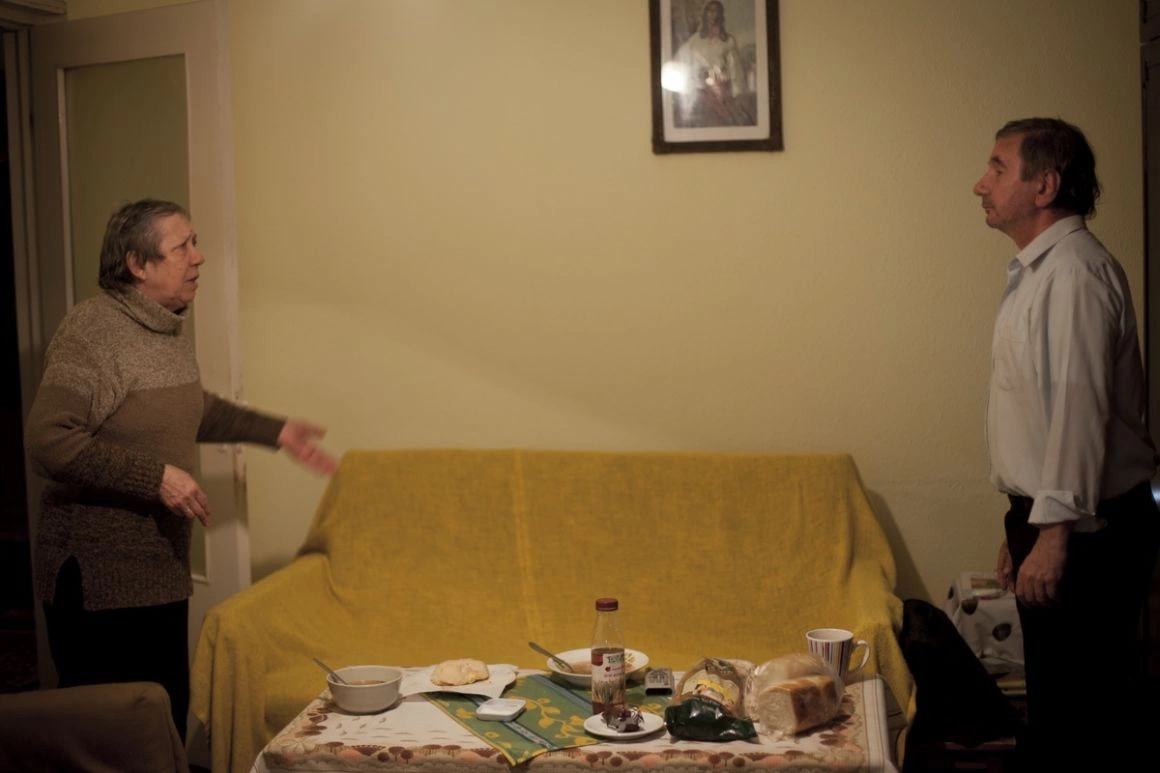
Cosmin Bumbuț
I always listen to the stories of the people I’m photographing. Sometimes, that’s tiring and painful; absorbing all those stories, especially those of vulnerable people. It’s frustrating when you get to your computer, download the images, and see that you don’t have any you like, and yet you’re feeling drained, regardless.
Hajdu Tamás
Respectfully and without taking away from their dignity. It’s very important not to damage the intimacy of those I’m photographing. When I take photos, I like to be unobserved, I don’t really interact with those I photograph. I just let things unfold as they may and I usually manage to remain an external observer. In more delicate situations, when I see that there is an imminent conflict, I do show people a couple of my photographs to prove my intentions are honorable.
Odeta Catană
The photographer’s capacity to empathize with people in vulnerable situations is paramount. In these types of situations, I believe the people/subjects can really sense how and who you are. I try to be open and relaxed, because the slightest hint of fear can be picked up. I am calm and I try to be very, very patient. While I was photographing one of my first projects, the Lucas – a family with 10 children – I was put in a situation where I had to decide something and sort out my priorities. The children’s father was an alcoholic and he was beating one of the girls who had been skipping school. When I arrived at their home, without announcing in advance that I was coming, you could hear her screams. He was beating her with a metal rod. I could have gone in to document the beating through a photograph, or to stop the whole thing without taking any pictures. I chose to go in with the camera on my shoulder and just talk to the father. The only photograph I took that day was with the little one, crying.
Petruț Călinescu
If you spend a lot of time with the subject, the photographs will come out well. For this to happen, you need to be accepted. I usually explain to them what I do and what I want to get out of this. Also, I refrain from taking too many photos on the first meeting. Then, I come back, and gift them some printed photos from that meeting, and so on. There are certain situations, especially in the case of street photography, when you don’t have time to chat – you take the picture and if you feel that you’ve bothered them, you apologize.
Virginia Lupu
I don’t build a strategy. I use my instinct and my credentials. There were time when I was rejected, and I came back to the people who rejected me, or they came back to me, for whatever reason. I met with them after a while and they received me differently. I don’t expect things to flow linearly. I do have photographic desires, people who I’ve had my eye on for quite some time and wished they let me photograph them. When I don’t have a connection to the person I’m shooting, the photographs aren’t too good. But when I photograph someone who’s smiling because they trust you, that’s something else. It’s as if even the shot itself, with all its elements, is different. There are some situations worthy of being photographed, and I just don’t do it, because I try not to be a bother, even though the subjects are involved in something else and they’re not really paying attention to me. If I am a bother, and people tell me that, I try to make the moment nice. I’ve never been in an unfortunate situation, when people are aggressive towards me or myself to others. Sometimes, I ask if they’re in the mood for a photograph. Most of the photographs of naked people are taken after a period of visitations, conversations, and such. A lot of them are sex workers and they ask me to take their photo for the personals ads. For those who want to see my work, I recommend publi24 or escortesex. I spend quite a lot of time with some of them and I know the marginal situation they are in. Which is why I try to be as present in their lives as possible. It has happened that the feelings overwhelmed me, but I don’t want to add my feelings on top of their intense feelings and emotions. I try to empathize constructively.
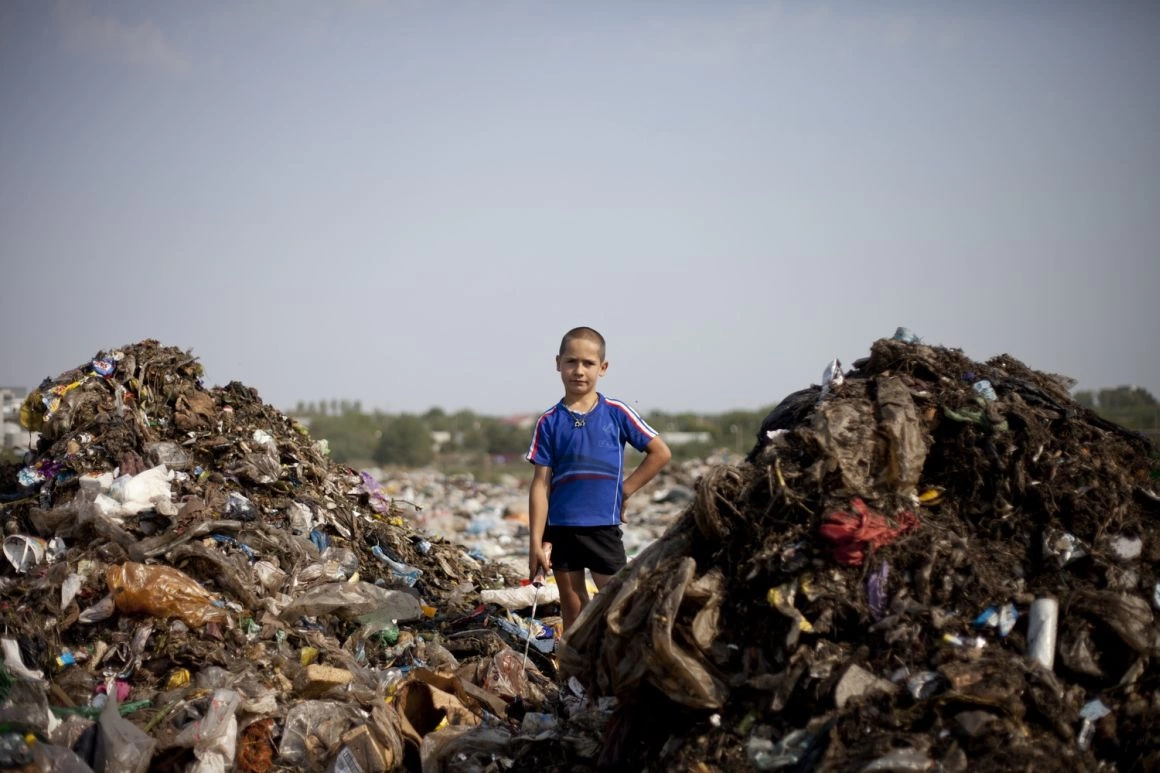
Have you ever hesitated publishing a photo, only to decide against it? Not because it wasn’t good enough, but because of its subject. If so, why?
Andreea Câmpeanu
There are a lot of photographs that I just didn’t send out. I always think about who’s going to look at a photo and what they’ll understand from it. How they’ll perceive the photograph and whether or not they’ll correctly interpret the context – there are a lot of bad people out there.
Andrei Nacu
For my project, In the Forsaken Garden Time is a Thief, my ownparents are my subjects. Selecting the photographs for the project was one of the biggest challenges I’ve ever faced. I realized that in this endeavor, I needed their help, which is why I gave them a say in choosing the images. My mission was not to define them according to my own assumptions, or to illustrate a certain idea with moments from their life. I understood that my role was to cherish them and to discover how they see themselves, not just how I see them.
When you’re judging a photograph, I don’t believe the visuals are enough, or that they should be a priority. I believe in the story behind the image and in the effect it can have on the subject or the viewer. I believe that most of the times, the process itself, what I discover and how it changes me is more important than the final result, which are photographs themselves.
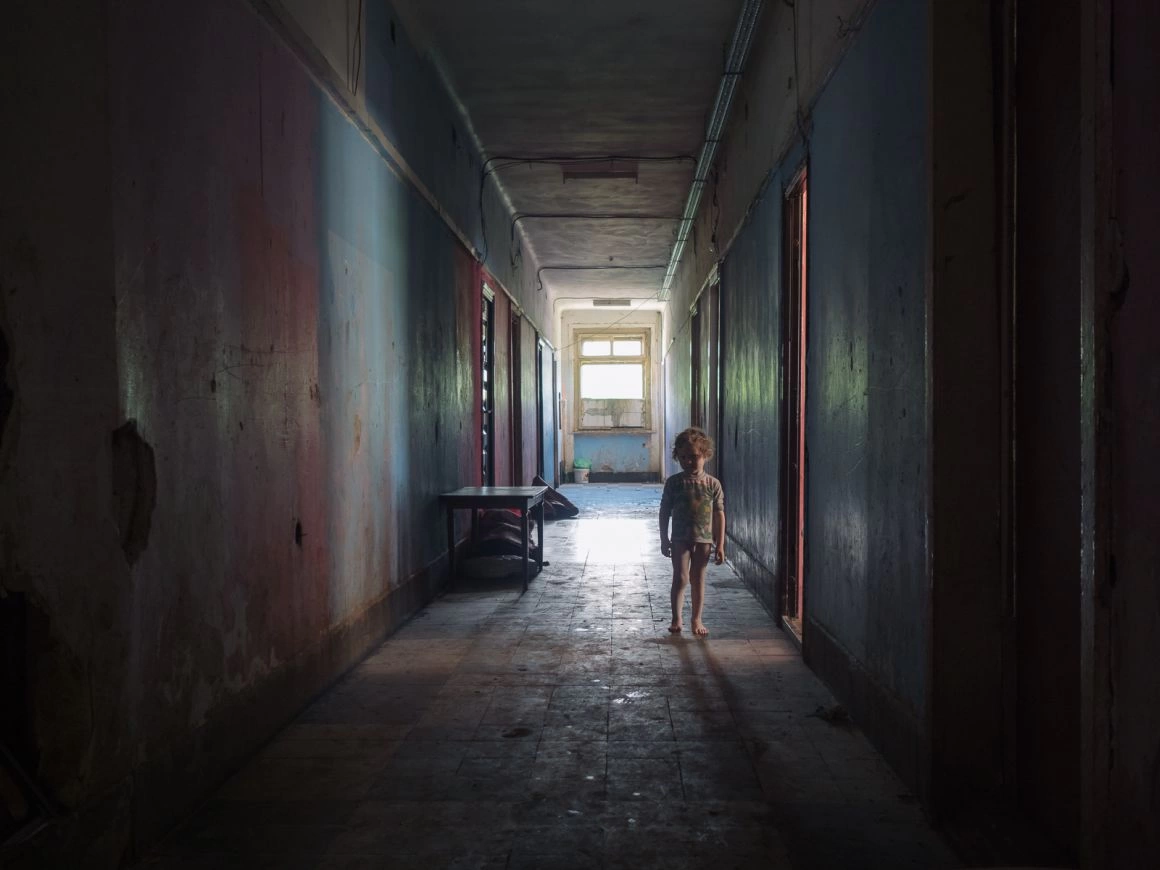
Andrei Pungovschi
Yes, many times and for various reasons. Sometimes, people don’t realize that they’re taking a risk when they agree to a photographer in their life and then it’s my job to protect them. It just may happen that someone does something in my presence that could get them in a lot of trouble if that image of them doing that were to be made public. Some have rolled a joint next to me while I was taking their photo. Others broke doors to sleep in abandoned houses. And this is where my responsibility comes in; it’s my job to photograph them so that I show what’s happening, but I never create a photograph that could be used against them in a trial.
Unfortunately, this isn’t a fool-proof technique. During the protest organized by Antena 1/3 on their evacuation from the building, I went and took photos of the crowd. I was curious to see who their supporters where. I posted some photos on Facebook and what followed was pure hell. The commentators dragged those protest people through the mud, in the most despicable way possible. Had I given it some more thought, I would have been able to anticipate this. It came to me too late, when the photographs had already been shared and I couldn’t change a thing.
Another reason this happens is that I prefer that any photograph I make public do more good than harm. It may sound cheesy, but I honestly believe in this.
For example, I took a photo of two young people kissing naked in the water. It was when I was doing a story about Vama Veche and they gave me their permission. It was a type of privacy that is hard to achieve, I really cared about that image. After a few years, the young woman’s husband (who was not the man she was kissing) called me and threatened me, asking to delete the image from the site and my blog. The threats were just pathetic and I could have easily ignored his request, because I was in a public space and all that. But then I realized that the presence of that photo online is harming them, and it’s causing them to fight. I deleted the photo because of this. I should be able to sleep well at night. Last year, I saw that woman in the photograph again. She told me that she had divorced her husband and that maybe it would be nice to put up the photo again. It kind of reeked of revenge, so I didn’t do it.
Cosmin Bumbuț
Yes, plenty of times. It last happened in Târgu Neamț, where I was documenting people with disabilities. Marinela was using a wheelchair, but she’s also being carried by her mother around the house, from one room to another. I took a photograph, but she looked so vulnerable, being carried by her mother like that, and the scene was just so intimate, that I don’t think I’ll ever make it public.
Hajdu Tamás
I have a tendency to highlight the ridiculousness and the absurd of various mundane situations. I rarely portrait the person I photograph is an unworthy fashion. It’s hard to say what photographs can be interpreted as offensive. But these decisions need to be made responsibly, so I simply stopped publishing those kinds of photographs. I’ve also learn not to click the shutter button when those sorts of situations arise.
Odeta Catană
This has never happened to me. I’ve never refused to publish a photograph, simply because the taking of a photo is preceded by the decision-making moment. And it’s not really a debate with myself, but more of an emotional reaction, and instinct. It’s simple: I take the photograph or I don’t. If I take it, then I’m sure to make it public. If I don’t take it, that’s the decision and I don’t regret the “wasted” time. It’s a choice I’m fully aware of. There are times when I edit or when publish the photos, when I feel sad about the moments I’ve captured. I’ve photographed a landfill in my home town of Călărași. There was a boy who was collecting plastic bottles, along with his brothers and father. He silently gave me the approval to photograph him. Even now, when I look at that photo, I still feel the sadness and bitterness I felt when I took that photo. That child should have been on a playground, not on a landfill, scavenging. But this is part of our reality and I chose to capture and share it.
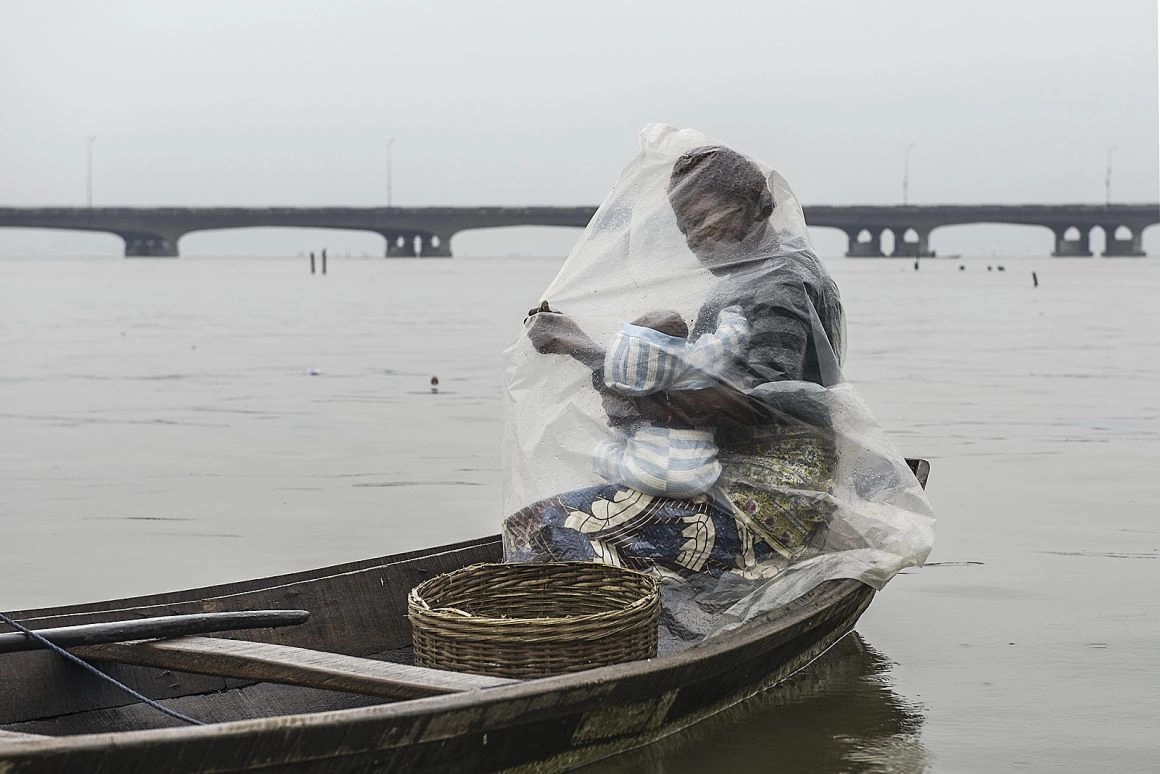
Petruț Călinescu
It does happen, but thanks to self-censorship, I do that right on the scene. You just don’t photographs certain moments and situations, it common sense. Sometimes, you need to put the camera down.
Virginia Lupu
There have been various times. It’s happened because I make connections to the people I photograph and usually try to keep those connections alive. And also because I know how each of them is; some are more open and don’t mind being exposed to trivial things and others are more reserved, reluctant and sensitive. I make a choice based on how they feel and what they choose to show me. I think of how they would like to see themselves, how they wouldn’t like to be embarrassed. I just try to think of as many scenarios as possible. The viewer of a photo always adds content to it. I have a short story about this. It was my first exhibition (Hansel loves Gretel, Visual Arts Center, coordinators: Gabriela Mateescu, Taietzel Ticălos) and there were some explicit pieces. Everything was set up, people were notified and I warned Ursuletz and Rusoaica that I was going to put up a photograph of them with a gentleman client. I showed them the photograph, which blurred much of the faces of the people in it, and kept the focus on the gentleman’s genitalia. They said it was fine. The girls lived right across from the exhibition, so I invited them to the opening and they accepted. But then, Cristina came; she’s a girl from the neighborhood who does parking and knows everyone, including those two women. Even though the photo was blurred, she recognized them and told a neighbor, who told Ursuletz. It was then that they asked me to take down the photograph, and even though I really liked it and it was the surprise element of the entire exhibition, I did take it down. Things can happen and you need to be gentle and vigilant. I take photos of people who belong to various social classes; indecent photos that can be disturbing to some. When I guarantee my subject’s confidentiality, I just don’t publish those photos, and I never will.
Primary photography: Odeta Catană, for the Center for Juridical Resources, for the project Death Camps Next to You
